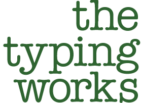In recent years, video conferencing tools like Zoom and Microsoft Teams have become essential platforms for conducting interviews, whether for research, journalism, or business purposes. However, there is one crucial aspect that can make or break the success of these interviews: maintaining silence when your participant is speaking.
Why is staying quiet so important? The primary issue arises when more than one person speaks or makes noise simultaneously. Whether it’s the sound of coughing, chiming in to agree with what’s being said, or even minor background noise, these interruptions can cause a major disruption in audio quality. Many video conferencing platforms are designed to prioritise one sound source at a time. As a result, when two people speak or make noise simultaneously, the platform may cut out or distort both voices. This often leads to audio dropouts, where valuable parts of the conversation are missed.
For anyone conducting interviews for transcription, this becomes a serious problem. When audio is lost or garbled, the ability to accurately transcribe the conversation is compromised. Even brief moments of audio dropout can mean the loss of critical data, especially in research, where every word matters. Once this data is lost, there’s no way to retrieve it, potentially leading to incomplete or flawed transcripts.
To prevent this, one simple but highly effective practice is to mute your microphone when the interviewee is speaking. By muting yourself, you eliminate the possibility of accidental noises or interruptions interfering with the interviewee’s voice. This ensures that their answers are recorded clearly, without the risk of audio dropouts or overlap.
Here are a few tips for ensuring high-quality audio during your Zoom or Teams interviews:
1. Mute your microphone when not speaking: As soon as you ask a question, mute yourself and only unmute when it’s your turn to speak again. This prevents even the smallest background noises from interfering with the conversation.
2. Avoid verbal affirmations while the participant is speaking: It’s tempting to say things like “mm-hmm” or “right” as a way of acknowledging the participant’s response, but even these small sounds can cause audio cutouts.
3. Use non-verbal communication: If you want to show that you are engaged with what the participant is saying, use nods, smiles, or other forms of non-verbal feedback instead of vocal interjections.
4. Test your equipment ahead of time: Ensure your microphone and speaker setup are working properly before starting the interview, and make sure both you and the participant are aware of the best practices for preventing audio issues.
5. Consider using headphones: Wearing headphones can help reduce the risk of sound feedback, where your microphone picks up sound from your speakers and causes distortion.
By following these guidelines, you can help ensure that your interviews are recorded with crystal-clear audio, minimising the risk of losing valuable information that cannot be transcribed later. In an interview setting, every word is important, so taking simple steps to maintain silence when necessary can make a big difference.
Remember, ensuring clear audio isn’t just about convenience—it’s about preserving the integrity of the data you collect. Taking a moment to mute your microphone during a participant’s response can save you hours of frustration later and guarantee that the insights gained from the interview are accurately captured.
